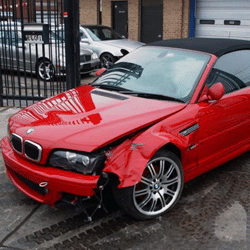Car fires can be a significant source of property damage, injury, or even loss of life. While car fires are an uncommon occurrence, they are known to happen more frequently than most people would like to admit. In fact, more than thirty vehicle fires of varying severity are reported around the United States every single hour. To add to that statistic, young adult drivers, mostly male, are the demographic usually associated with car fires. But regardless of your background or driving habits, a car fire can cause serious harm to both yourself and your passengers.
All cars have more than a handful of combustible and flammable components and materials. The fuel cars run on, for example, is prone to combustion when mishandled. The same goes with electrical cars whose various number of electronic equipment can be a source of spark and fire in case of malfunction.
If the flame doesn’t come from external sources, a majority of vehicle fires occur from inside the engine compartment. This becomes particularly hazardous because cars are designed to keep people inside the vehicle. This makes it especially hard to escape, especially when the fire occurs while the car is moving.
Poor maintenance, engine malfunction and negligence are all possible reasons for car fires. But should you come across a car fire, here are somethings you can do to avoid serious injury.
WHAT TO DO WHEN THE CAR IS IN MOTION
Fires can be particularly hazardous when the vehicle is in motion. This makes it difficult, even dangerous, for you to try and step out of the car immediately. But here’s what you can do if a fire starts in your car while you’re still on the road.
Pull Over Safely and Properly
Don’t simply stop the car anywhere. Be urgent about your intent to pull over, but don’t do so without signalling your intention to pull over on the right side of the road. If there is a breakdown lane nearby, pull over there, if not, the shoulder will do.
Turn off the Engine
To avoid causing further damage to your car and keep the flame from affecting other flammable objects in your vehicle, immediately turn off the engine.
WHAT TO DO WHEN THE CAR ENGINE HAS BEEN TURNED OFF
Once your car has been pulled over and the engine has been turned off, putting distance between you and the burning vehicle, regardless of the size of the flame is the top priority.
Get Everyone Outside of the Vehicle
Make sure the vehicle is clear of passengers. Lead them a safe distance away from the burning vehicle.
Wave Off Oncoming Traffic
Make sure to wave away other vehicles that may be driving too near to your car. They might end up being affected in case the fire begins to spread.
Notify Emergency Personnel
Immediately alert the fire department or local emergency authorities of your situation.
Don’t Put Out the Fire On Your Own
Do not try to extinguish the fire on your own under any circumstances. Should the fuel in your car ignite, this can cause serious injury to anyone in the nearby vicinity of the car. When dealing with car fires, prevention is always key. But should you have to deal with a lit car fire, your safety and the safety of your passengers should take precedence.




 Follow
Follow

